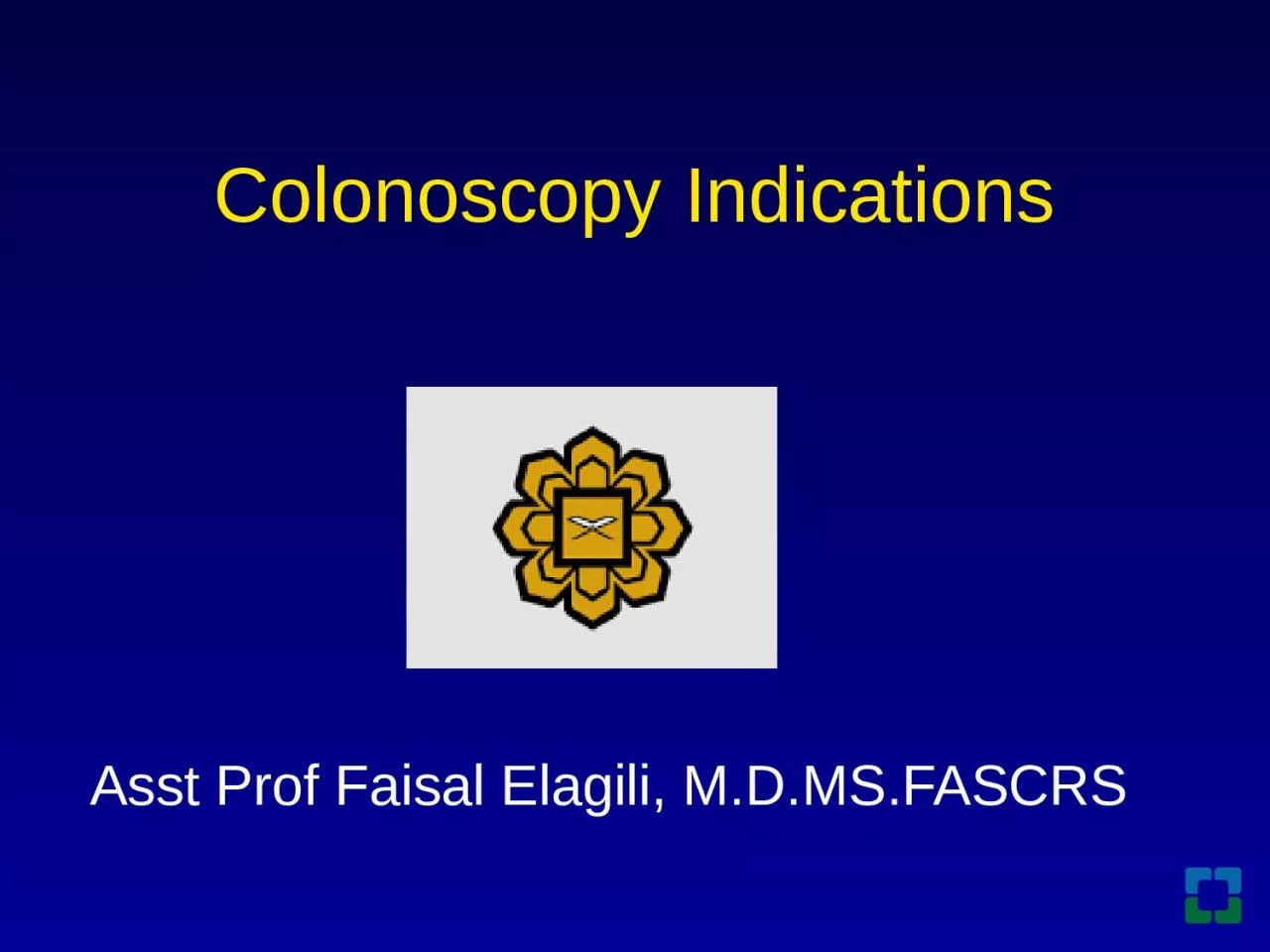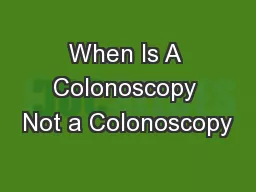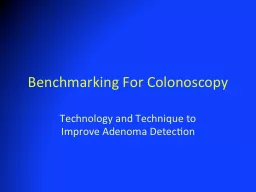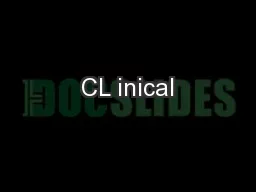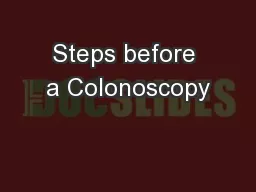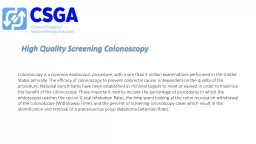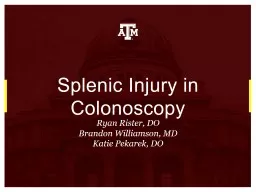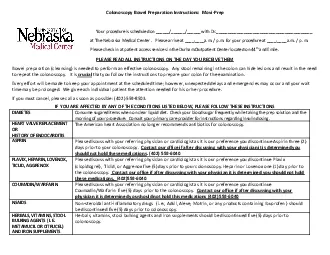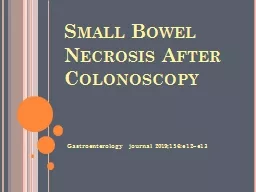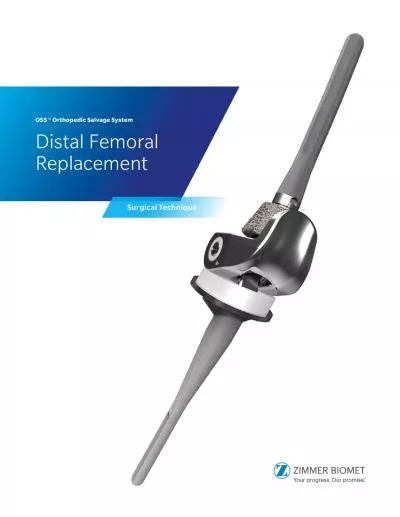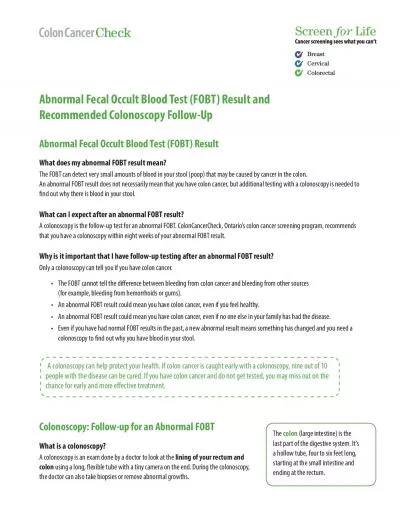PPT-Colonoscopy Indications
Author : mia | Published Date : 2024-02-03
Asst Prof Fais a l Elagili MD MSFASCRS C olonoscopy Colonoscopy is an examination to inspect the inner lining of the large bowel rectum and colon using a flexible
Presentation Embed Code
Download Presentation
Download Presentation The PPT/PDF document "Colonoscopy Indications" is the property of its rightful owner. Permission is granted to download and print the materials on this website for personal, non-commercial use only, and to display it on your personal computer provided you do not modify the materials and that you retain all copyright notices contained in the materials. By downloading content from our website, you accept the terms of this agreement.
Colonoscopy Indications: Transcript
Download Rules Of Document
"Colonoscopy Indications"The content belongs to its owner. You may download and print it for personal use, without modification, and keep all copyright notices. By downloading, you agree to these terms.
Related Documents

